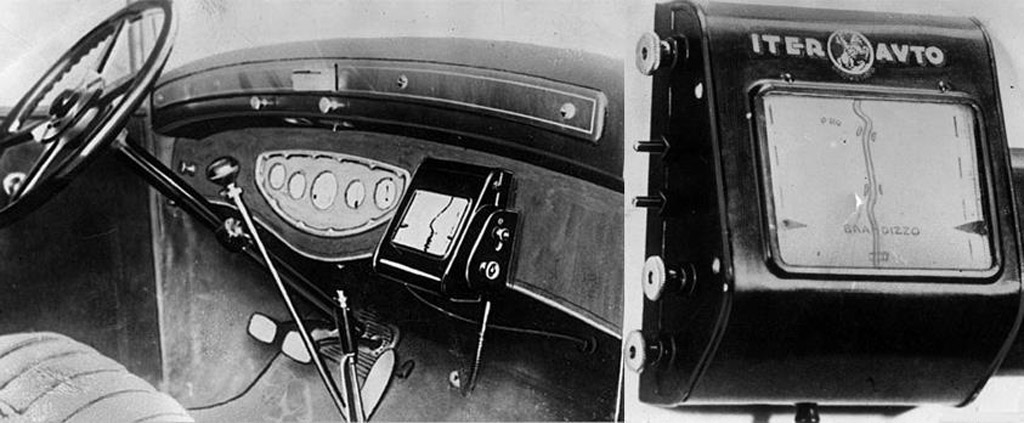
Iter Avto navigation system from 1930 - Image courtesy London Media
Since the Trapper Keeper’s calendar was never full of dates with cheerleaders (or honestly, many girls of any clique), it left more than a few evenings open for television shows like Knight Rider.
While the 300 mph top speed was a cool storyline concept, some of KITT’s other bits seemed more practical for everyday use.
The high-tech Trans Am’s onscreen map display was a good example; an updated take on the one fitted in James Bond’s Aston Martin DB5.
At the time, one had to wonder when something like that would appear in a real car. If an article in The Daily Mail is any indication, we were decades off--and looking in the wrong direction.
It seems the first application dates to 1930, in Italy. A couple photos of the Iter Avto are all we have to go by, but it seems fairly ingenious for its time. Like today’s original equipment sat-nav units, the Iter Avto was dashboard-mounted. But since there were no sats to nav, the system relied on paper scrolls for display.
Crude, but it did display position in real-time. More or less. As soon as the driver deviated at all (for a detour, missed turn or simply pulling off the road), the map display would be incorrect and stay that way. Turn-by-turn guidance? Not so much. We’re not sure the Italian word for “recalculating”, though it’s a moot point because it was never uttered by the device.
And even if the driver followed the route religiously, the system was driven by and based on the accuracy of an old mechanical speedometer. An old Italian mechanical speedometer. For decades, their needles typically hovered well off the zero mark, even at a dead stop.
Still pretty cool for its day, though. So why didn’t Iter Avto take off? Information isn’t readily available, but we can only agree with the article’s presumption. Most people didn’t even own autos at the time. And when the Great Depression rippled across the pond, it kept folks out of cars even longer.
Eighty-odd years later, in-car navigation is almost as common as cruise control. We still haven’t cracked 300 mph in a street car, but we’re not that far off, either.
Thanks Echo for sending in the tip!